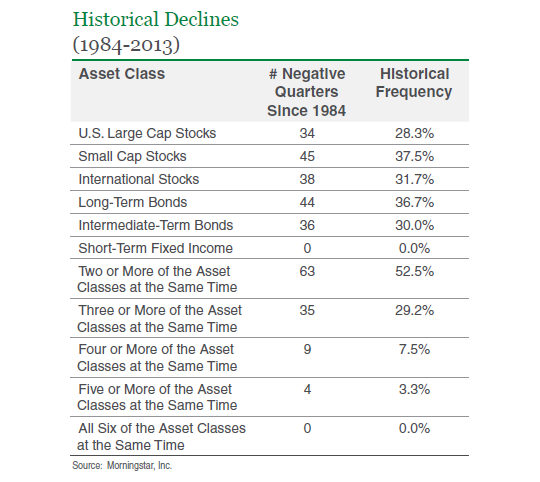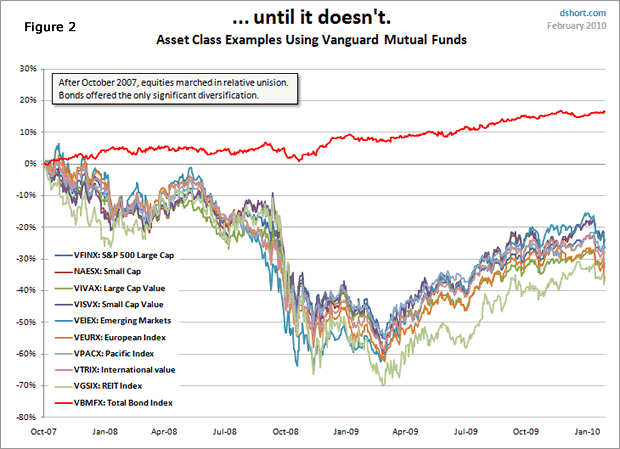Diversification across multiple asset classes significantly reduces dramatic declines
Post on: 30 Апрель, 2015 No Comment

Share This Story
Diversification across multiple asset classes is one of the most effective risk management tools available to investors, according to Manning & Napier.
Investors can reduce the risk of declines in their portfolio by including multiple asset classes, like U.S. large cap stocks, small cap stocks, international stocks, short-term fixed income, intermediate-term bonds and long-term bonds .
Diversification risk-proofs your portfolio because when stocks are down, domestic bond prices may rise and international equities may not react at all.
When a portfolio includes broad exposure to multiple asset classes, it is less exposed to extreme market fluctuations because declines in one asset class may not be experienced by other asset classes, and quite possibly may be offset by gains in another asset class, the report stated.
Alternatives gain momentum with institutional investors
Manning & Napier gave a historical perspective on how different asset classes have reacted from 1984 to 2013. It is a sobering list, highlighting the historical declines that have taken place in all of the major asset classes except short-term fixed income.
U.S. Large Cap Stocks saw 34 negative quarters since 1984, while small cap stocks saw 45 negative quarters. International stocks experienced 38 negative quarters, while long-term bonds saw 44 negative quarters. Intermediate-term bonds had 36 negative quarters since 1984.

If a portfolio had two or more of the asset classes at the same time, it saw 63 negative quarters and if it had three or more of the asset classes at the same time, it saw 35 negative quarters.
All in all, the major asset classes identified have experienced negative returns in about 25 percent to 40 percent of the 120 calendar quarters covering the last 30 years. The more asset classes included in a portfolio, the lower the risk.
Portfolios that included four or more of the asset classes at the same time saw 9 negative quarters and those with five or more of the asset classes at one time saw 4 negative quarters. Those with six different asset classes didnt experience a negative quarter in 30 years, according to Manning & Napier.
Clearly, broad diversification across multiple asset classes can significantly reduce the probability of an investors portfolio experiencing dramatic declines, the report found. While it may be tempting to try to identify the single asset class that is expected to perform the best over the near-term and invest solely in that asset class, history has proven that asset class returns are unstable over time and the best performing asset class can turn into the worst performing asset class very quickly.














